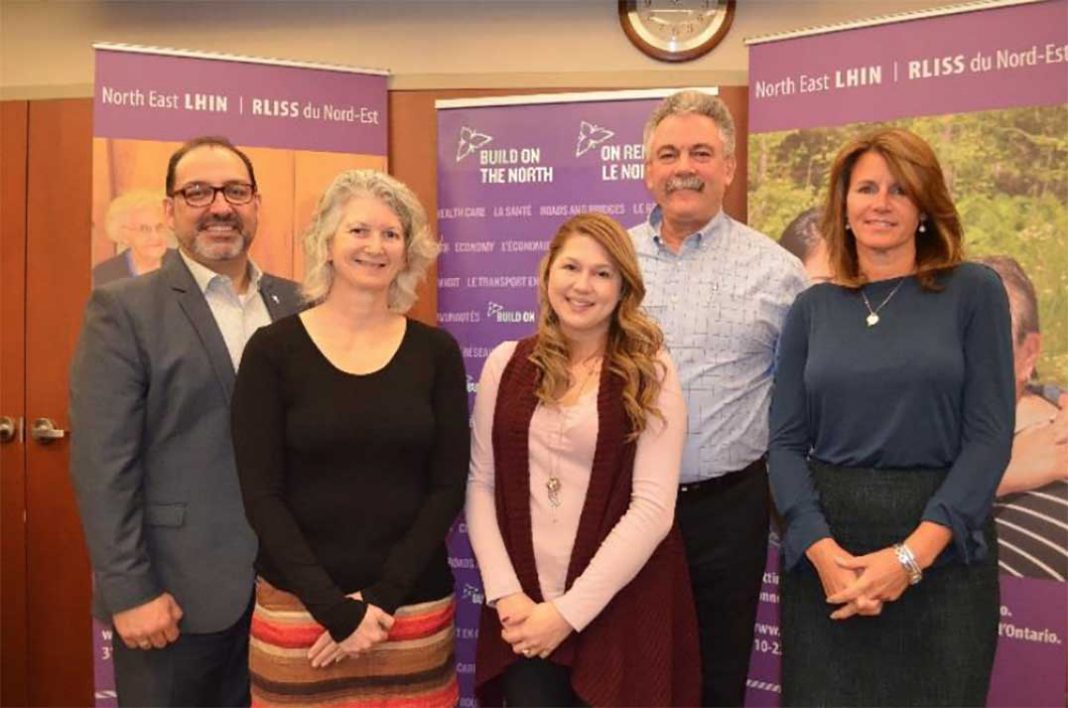NORTHERN ONTARIO—The North East Local Health Integration Network (NE LHIN) is increasing treatment services to meet the growing needs of people with addiction to opioids. A total of $1.65 million in base funding is being invested across Northeastern Ontario to bring care closer to home for Northerners, increasing access to treatment and care coordination in NE LHIN communities.
Yesterday, Tuesday, January 16, the NE LHIN launched its opioid strategy at a meeting of its Regional Mental Health and Addictions Advisory Council, which was instrumental in developing the strategy and will work with Opioid Task Forces within each of the North East LHIN’s sub-regions—Algoma, Sudbury/Parry Sound/Manitoulin, Cochrane, James Bay and Hudson Bay Coast, and Nipissing/Temiskaming—to implement the strategy.
“The new funding will expand and create Rapid Access Addiction Medicine (RAAM) clinics that provide an addictions treatment pathway between the clinic and different places where the client is likely to seek care such as emergency departments, primary care providers, mental health and addiction agencies and withdrawal management programs,” states a press release from the NE LHIN. “It will also enhance and expand community-based withdrawal management programs, a recommendation made to the North East LHIN by Dr. Brian Rush in his North East LHIN Addiction Services Review.”
Dr. Rush noted that while there are many residential treatment programs, more community day programs are needed as they bring care closer to home, allowing participants to continue to live at home.
“Each sub-region received $200,000 to establish a RAAM clinic and $130,000 to enhance withdrawal management and addiction counselling,” the release adds. “An additional $200,000 will also go to Health Sciences North (HSN) which will take on a role as lead agency for research, data collection/analysis and evaluation. HSN will also work with the sub-region RAAM clinics to explore opportunities to create a regional platform to ensure timely access for Northerners to these clinics. The NE LHIN has allocated the following funding: Nipissing Temiskaming (transfer agencies), North Bay Regional Health Centre ($200,000), North Bay Recovery Home ($130,000); Algoma (transfer agency), Sault Area Hospital ($200,000 +$130,000); Cochrane and James Bay Coast (transfer agency), South Cochrane Addiction Services ($200,000 + $260,000); and Sudbury/Manitoulin/Parry Sound (transfer agencies), Health Sciences North ($400,000); Parry Sound CMHA ($130,000).”
The NE LHIN’s strategy uses a ‘hub and spoke’ model, in which RAAM clinics are located within each sub-region’s urban centres (the hub) with links (spokes) to outlying areas such as Manitoulin.
“Manitoulin is part of HSN’s coverage and will work in partnership with them on the RAAM,” said Pam Williamson, who is the co-chair of the NE LHIN Mental Health and Addiction Circle.
“As one of the highest users of telemedicine with 300 Ontario Telemedicine Network sites across the region, this strategy leverages virtual expertise to ensure equitable access to services for Northerners,” the press release states.
“The devastating impact of opioid use disorder and overdose has reached every community in Ontario and crosses all demographics,” commented Minister of Health and Long-Term Care Dr. Eric Hoskins. “Our government has been working closely with partners across the province to combat this urgent issue for more than a year, and we are continuing to strengthen our strategy and increase harm reduction, addiction treatment and other supports. It is through this collaborative, evidence-based and comprehensive approach that we will be able to effectively address this crisis and save lives.”
Announced in fall 2016, Ontario’s comprehensive Strategy to Prevent Opioid Addiction and Overdose is ensuring people in pain receive appropriate treatment, increasing access to holistic treatment for those with opioid use disorder, and improving the safety and health of people who use opioids, including access to the life-saving drug naloxone.
Over the next three years, Ontario is investing more than $222 million province-wide to combat the opioid crisis in Ontario, including expanding harm reduction services, hiring more front-line staff and improving access to addictions supports across the province.





